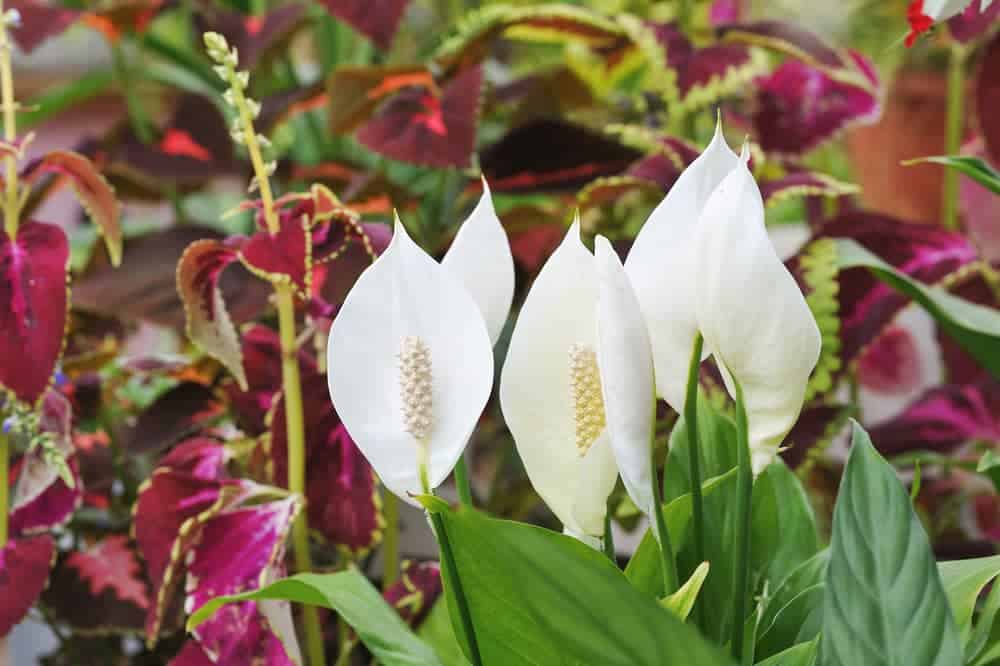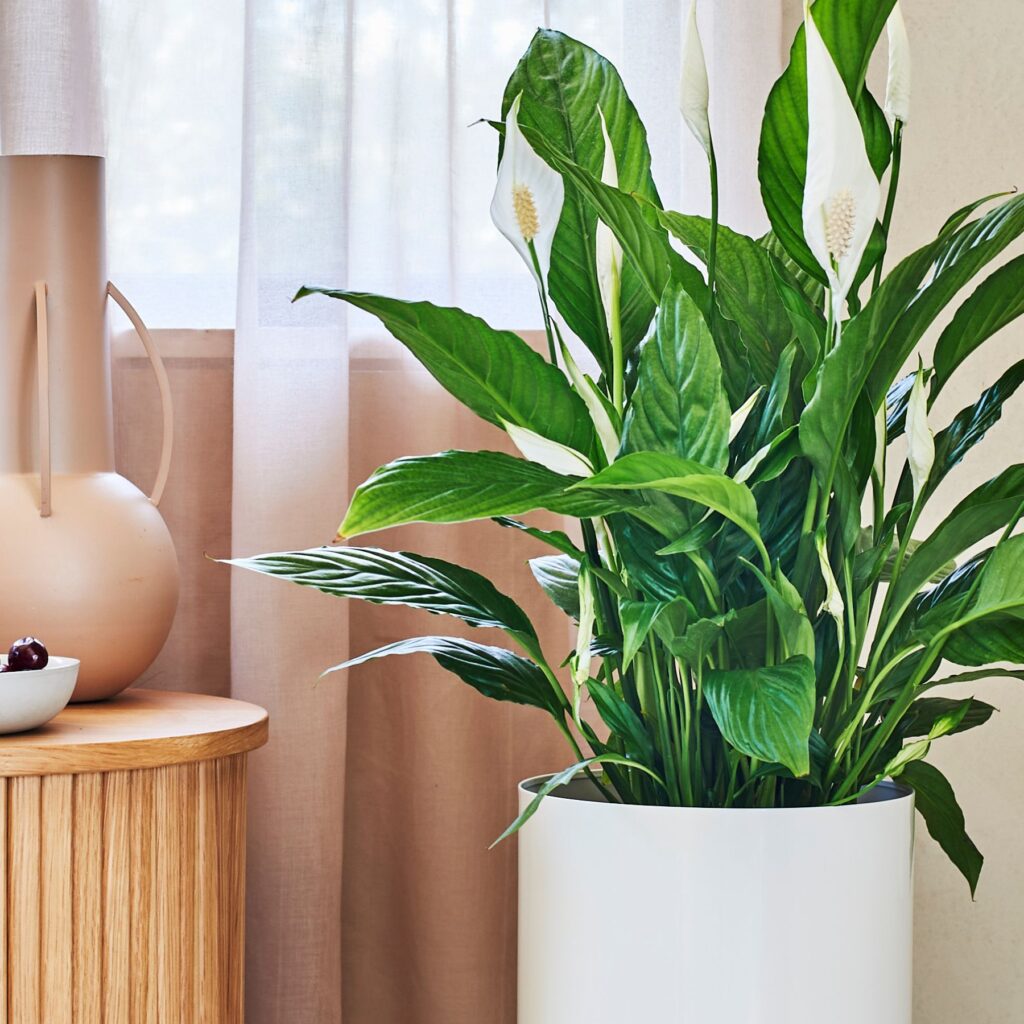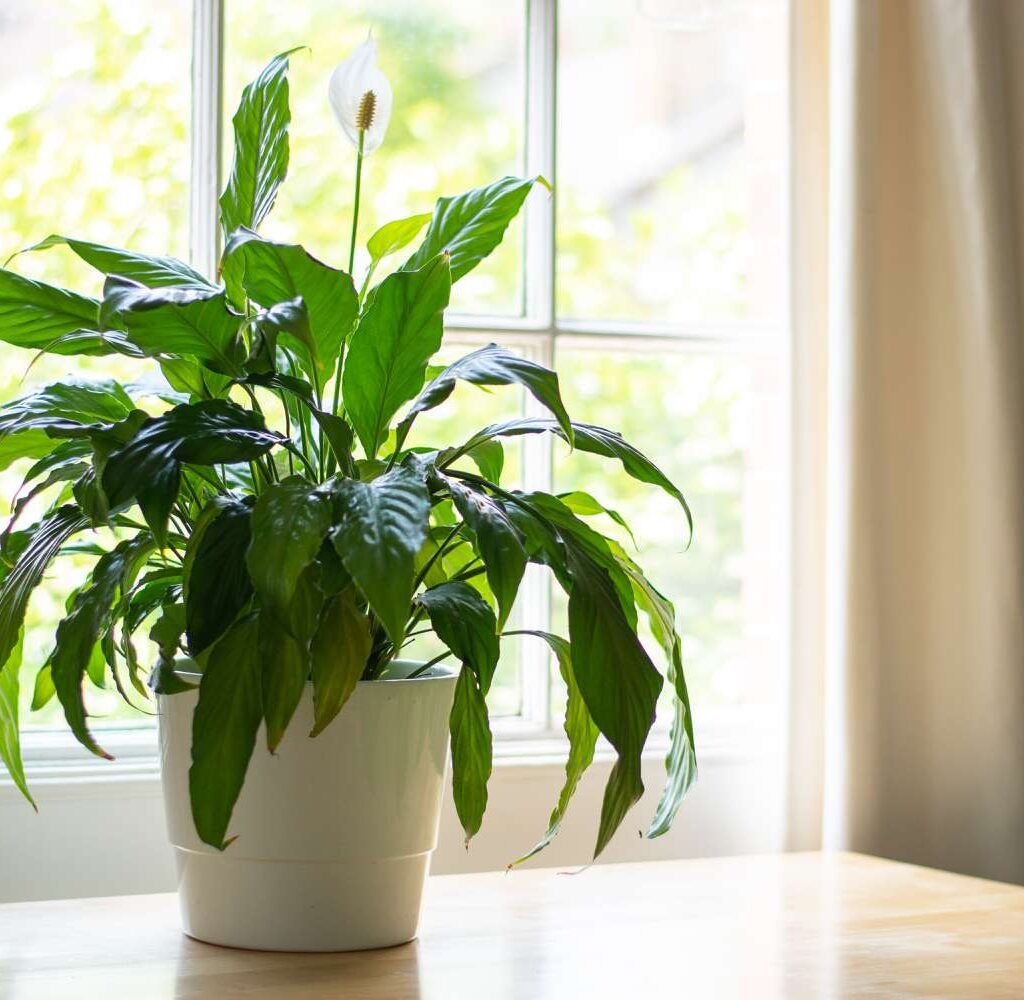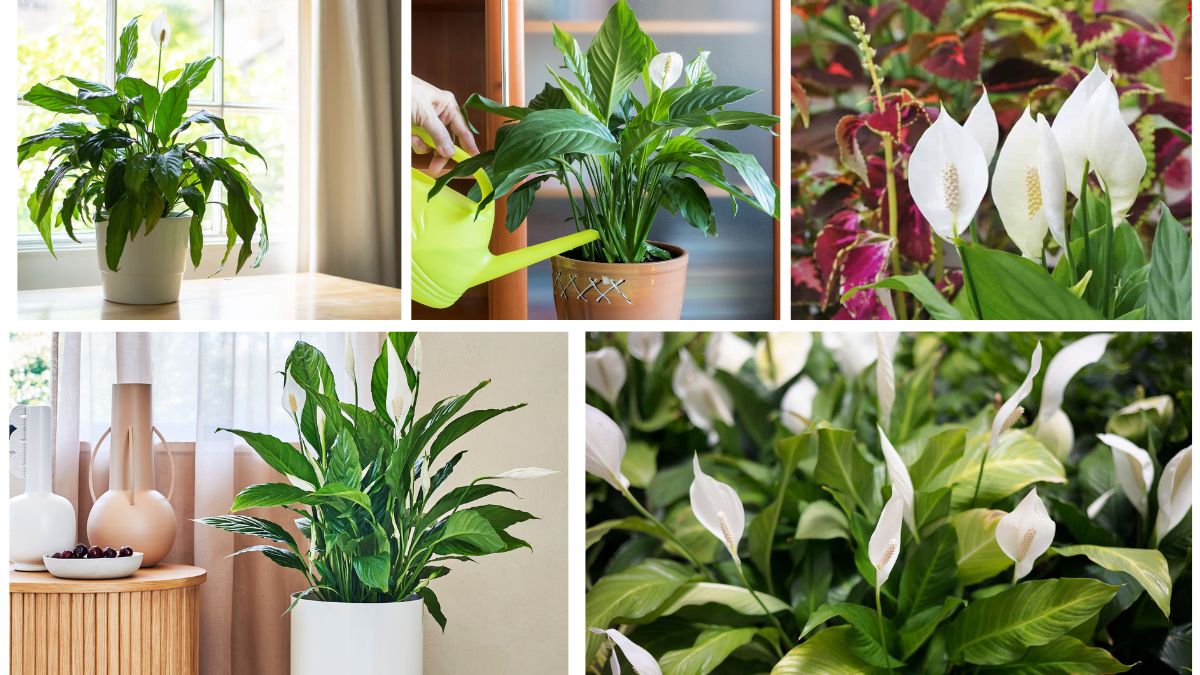Peace lilies (Spathiphyllum) are among the most popular houseplants, admired for their glossy green leaves and elegant white blooms. Beyond their beauty, they are also known for their air-purifying qualities, making them a valuable addition to any indoor space. However, while peace lilies are relatively low-maintenance, they still require the right care to stay healthy and produce flowers regularly.
This step-by-step guide will walk you through everything you need to know about peace lily care, from light and watering requirements to fertilization and troubleshooting common problems, so you can enjoy lush foliage and continuous blooms indoors.
Introduction to Peace Lilies

Peace lilies are tropical plants native to Central and South America, where they grow under the canopy of rainforests. This makes them naturally suited for indoor environments, as they thrive in indirect light and warm, humid conditions. With proper care, a peace lily can live for years, bringing elegance and calmness to your home.
One of the most appealing features of peace lilies is their long-lasting white blooms, technically specialized leaves called spathes, which surround a yellow spadix at the center. These blooms typically appear in spring and can last for weeks, adding a striking contrast to the deep green foliage.
Light Requirements for Peace Lilies

Peace lilies are shade-loving plants, but light plays a big role in their ability to bloom.
- Best Light: Place your peace lily in bright, indirect light, such as near a north- or east-facing window. A few feet away from a bright window is perfect.
- Avoid Direct Sunlight: Harsh sun can scorch the leaves, causing brown spots and fading.
- Low Light Tolerance: Peace lilies can survive in low light but may not flower as often. For more blooms, provide them with filtered, moderate light.
Pro Tip: If your peace lily isn’t blooming, try moving it to a slightly brighter spot without exposing it to direct sun.
Watering Your Peace Lily Correctly
Peace lilies are sensitive to both overwatering and underwatering, so getting the balance right is key.
- Check Soil Moisture: Water when the top inch of soil feels dry. Stick your finger into the soil—if it’s dry at that depth, it’s time to water.
- How to Water: Use room-temperature water and pour slowly until water drains out of the bottom. Discard excess water from the saucer to prevent root rot.
- Signs of Underwatering: Drooping leaves that perk up quickly after watering.
- Signs of Overwatering: Yellow leaves, root rot, and a constantly soggy soil.
Pro Tip: Peace lilies are sensitive to chemicals in tap water, like chlorine and fluoride. If possible, use filtered or distilled water, or leave tap water out overnight before using.
Soil and Potting Needs

Choosing the right soil mix and container is crucial for keeping peace lilies healthy.
- Soil Mix: A well-draining mix works best. Combine regular potting soil with perlite or orchid bark for better aeration.
- Pot Size: Choose a pot that’s 1–2 inches larger than the root ball. Peace lilies like being slightly root-bound, which can even encourage blooming.
- Drainage: Always use pots with drainage holes to prevent waterlogging.
Pro Tip: Repot every 1–2 years in spring to refresh the soil and give the roots more space.
Temperature and Humidity

Peace lilies love warm, humid conditions that mimic their tropical origins.
- Temperature Range: Keep them in rooms with temperatures between 65–80°F (18–27°C). Avoid cold drafts and sudden temperature changes.
- Humidity Needs: They prefer high humidity. If your indoor air is dry (especially in winter), mist the leaves, use a pebble tray, or place a humidifier nearby.
Pro Tip: Grouping peace lilies with other indoor plants can also naturally increase humidity.
Fertilizing for More Blooms
Fertilizing peace lilies regularly will boost their flowering and overall growth.
- When to Fertilize: During the growing season (spring and summer), feed every 6–8 weeks.
- Best Fertilizer: Use a balanced, water-soluble houseplant fertilizer diluted to half strength.
- Avoid Overfertilizing: Too much fertilizer can burn the roots and reduce flowering.
Pro Tip: Look for fertilizers with a slightly higher phosphorus content (the middle number in NPK ratios) to encourage more blooms.
Pruning and Grooming

Regular maintenance keeps your peace lily looking its best.
- Remove Spent Blooms: Once the white spathes turn brown or green, cut them at the base to encourage new flowers.
- Trim Yellow Leaves: Snip off any yellowing or dying leaves to maintain a fresh appearance.
- Clean Leaves: Wipe the glossy leaves with a damp cloth to remove dust, which helps them photosynthesize better.
How to Encourage Peace Lilies to Bloom
Sometimes, peace lilies focus only on leaf growth and stop blooming. To encourage flowers:
- Provide Bright, Indirect Light: Low light reduces blooms.
- Keep the Plant Slightly Root-Bound: Don’t rush to repot; they flower more when roots are snug.
- Use Bloom-Boosting Fertilizer: Fertilizer with more phosphorus helps trigger flowering.
- Maintain Consistent Care: Avoid irregular watering and sudden changes in conditions.
Patience Tip: Even with perfect care, peace lilies bloom seasonally, mainly in spring and early summer.
Common Peace Lily Problems and Fixes
Even with the best care, peace lilies may show signs of stress. Here’s how to troubleshoot:
- Brown Leaf Tips: Often caused by dry air, underwatering, or tap water chemicals. Increase humidity and use filtered water.
- Yellow Leaves: Usually a sign of overwatering or aging leaves. Adjust watering habits.
- No Flowers: Insufficient light, lack of fertilizer, or too much repotting may be the cause. Move to a brighter spot and fertilize lightly.
- Drooping Leaves: Can mean underwatering or sometimes overwatering. Check soil moisture before reacting.
Benefits of Growing Peace Lilies Indoors
Caring for peace lilies doesn’t just beautify your home—it also offers multiple benefits:
- Air Purification: NASA studies list peace lilies among the best air-cleaning plants, removing toxins like benzene and formaldehyde.
- Aesthetic Value: Their lush green leaves and white blooms add elegance to any indoor corner.
- Stress Reduction: Indoor greenery, including peace lilies, has been linked to reduced stress and improved mood.
- Low Maintenance: Compared to many flowering plants, peace lilies are forgiving and easy for beginners.
Final Thoughts
Peace lilies are timeless indoor favorites, combining beauty, ease of care, and health benefits. To keep them blooming indoors, focus on bright, indirect light, consistent watering, warm humidity, and light fertilization. With regular pruning and occasional repotting, your peace lily will reward you with lush greenery and elegant white blooms year after year.
Whether you’re a beginner or an experienced plant lover, peace lilies are a rewarding addition to your home. Give them the care they need, and they’ll thrive—brightening your indoor space with their calming presence and graceful flowers.





